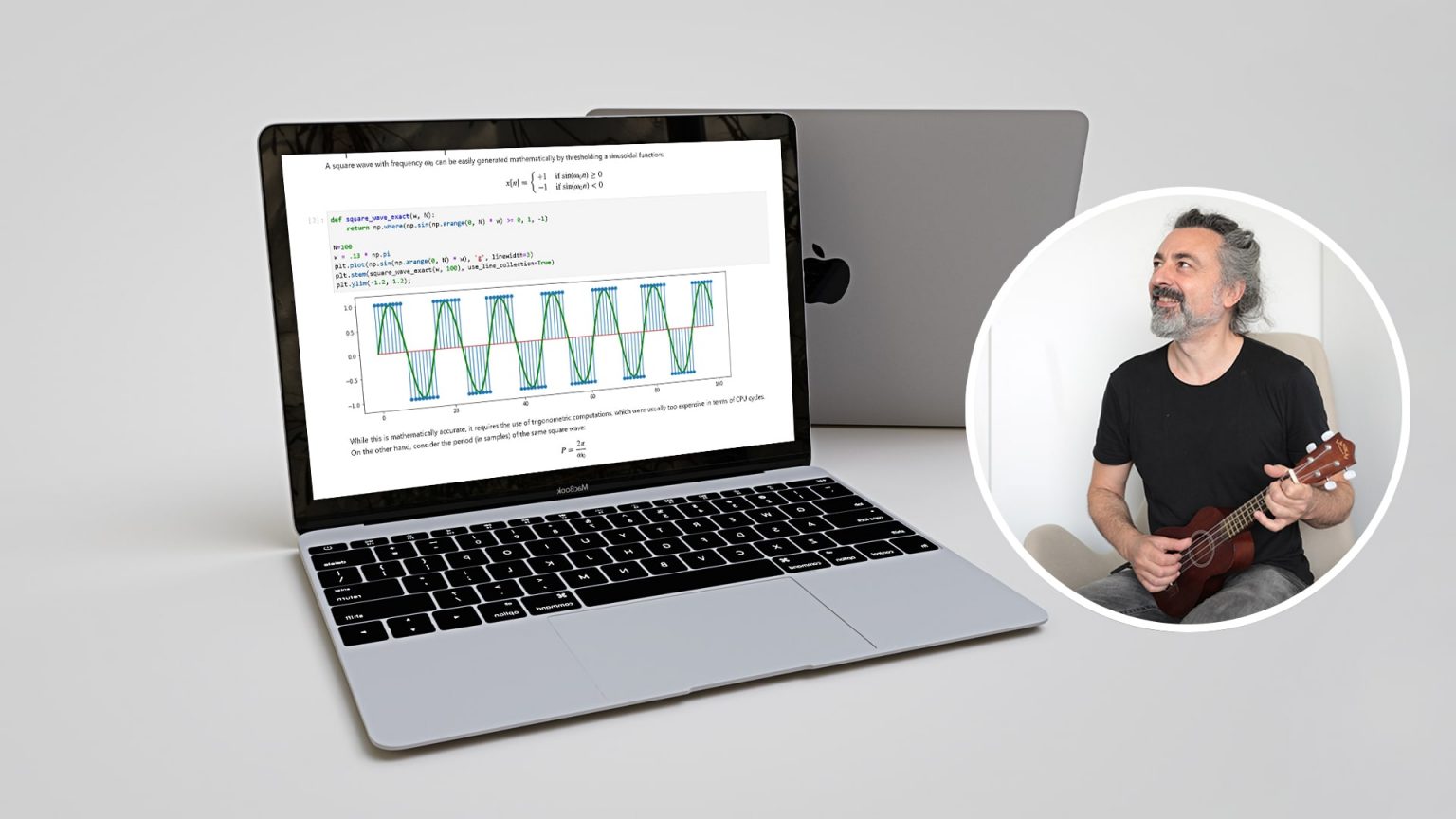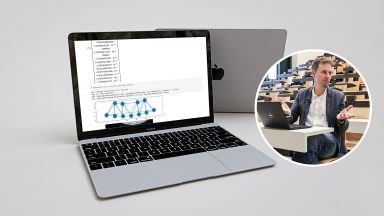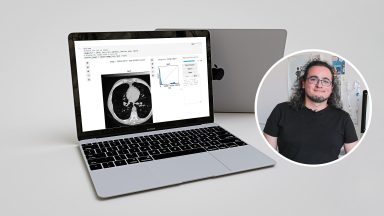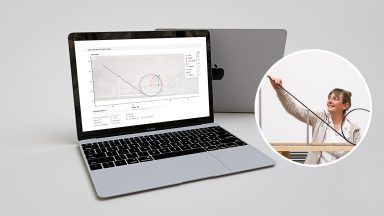
Interactive multimedia narratives to foster students’ curiosity – Credit Alain Herzog for the portrait
Paolo Prandoni, a research scientist at the audiovisual communications laboratory of EPFL and an avid music lover, uses Jupyter Notebooks to teach the fundamentals of digital signal processing. For him, it is the ideal way to combine theory with practice.
“Today you can do almost anything on a laptop,” says Prandoni. “And Jupyter Notebooks turn laptops into portable labs where students can run experiments, try things out and apply the theory they learn in class.”
Prandoni, an expert in communication systems, is a research scientist at EPFL’s Audiovisual Communications Laboratory (LCAV) and lecturer in the School of Computer and Communication Sciences. He channels his love for music into the signal processing classes he teaches. With topics such as musical tones, audio compression, audio measurement, image analysis and communication system design, he creates interactive multimedia Jupyter Notebooks that feature code-generated sound and images.
Using students’ curiosity to get them into coding
Prandoni believes that it’s precisely this ability to include multiple types of media that makes Jupyter Notebooks such a useful tool. With these features, he can create playful, instructive narratives that feed students’ curiosity. For example, he uses the music from Pac-Man to explain the math behind that game’s unmistakable sounds, and he demonstrates how to reproduce the guitar chord distortion at the beginning of the Beatles’ “I Feel Fine.” The idea behind his classes is to explore with students whether sounds can be synthesized with computer code, such as to replicate a guitar or piano, and how the audio is processed. “I want to make the Notebooks as fun to use as possible, so that the students’ interest helps them get into coding,” says Prandoni.
Learn how to design interactive textbooks in Jupyter notebooks
Students can access Jupyter Notebooks on noto, EPFL’s centralized JupyterLab platform for education. Noto lets students execute the Notebooks directly online. “They can even use Jupyter Notebooks while they’re on the go. It’s a fantastic resource that we have,” says Prandoni.
Jupyter Notebooks for MOOCs and research
Prandoni first became interested in Jupyter Notebooks when he began giving MOOCs in 2013. His MOOCs turned out to be highly popular – over 3,000 people have successfully completed them worldwide – so he needed a free, easy-to-use software that was compatible with just about any device, including those without a lot of processing power. “I like the Python programming language because it can be compiled and run on standard equipment, and you don’t need an expensive license like you do for MATLAB, which is what I’d been using previously,” he says.
Prandoni also uses Jupyter Notebooks for his research presentations, so that he can make them more interactive and dynamic. Especially since the Notebooks let him show his work using just one document rather than two, with the code and the explanation nicely integrated together. “That saves me a lot of time,” he says.
Author: Sandy Evangelista
Videos:
Notebooks:
Share on
Other stories

Structure modeling exercises
Guillaume Anciaux uses Jupyter Notebooks as exercise worksheets to help students learn about civil engineering.

Automatically graded image processing assignments
Pol del Aguila Pla uses automated grading in image processing labs based on Jupyter Notebooks.

Virtual demonstrations in physics
Virtual demonstrations help students visualize the different variables involved in experiments in Cécile Hébert’s Jupyter Notebooks.